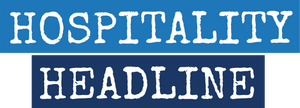Digital Ad Education Article 1 of 3
Maximizing Return on Ad Spend: Beyond the 1:1 Ratio
Return on Ad Spend (ROAS) is a critical metric for evaluating digital advertising effectiveness. While many marketing agencies tout achieving a "1:1 ROAS relationship" (spending $1 on ads to generate $1 in sales), this benchmark is often inadequate. Understanding the true cost structure and revenue implications reveals why businesses should aim much higher.
The True Cost of Digital Advertising
The expenses associated with digital advertising extend far beyond the direct media spend:
- Actual paid amount for ad placements
- Creative development (visuals and copywriting)
- Administrative efforts for campaign setup and variations
- Analytics for tracking and performance measurement
- Strategic planning, competitor analysis, and keyword research
- Ongoing campaign management and platform testing
In typical agency models, administrative fees can consume 25-35% of the total ad budget. Those costs are "hidden" because the fees are "carved out" of the ad dollar budget. Many agencies also charge additional fees for creative services as hourly or flat rates. Further costs may include processing fees, credit card charges, and other transaction expenses passed through from advertising platforms.
To accurately evaluate ROAS, businesses must account for this comprehensive expense picture: strategy development, execution, analysis, revision, and reporting.
The Revenue Reality Check
Most ROAS calculations focus solely on gross revenue generated from sales without accounting for profit margins. This creates a dangerously misleading picture of advertising effectiveness. This benefits the agency, whether done through lack of education or intentionally, often to the detriment of the business. For those with internal teams the effect can be the same.
Executives generally don't understand the mechanics of digital ad efforts which accounts for how frequently businesses are disappointed with ad pay back, even if the ROAS 1:1 ratio is achieved or exceeded. This creates confusion and mistrust and is avoidable.
SIDE NOTE: Get consensus on the business purpose of your digital ad campaigns. Are you seeking to expand brand awareness or sales leads and conversions? Those are two very different tactics. If you are building awareness as a goal, then you should expect a lower ROAS than if you are seeking conversions.
According to a 2023 report from eMarketer, the average ROAS across industries is approximately 2.87:1. However, when factoring in all agency fees and true costs, the breakeven point typically requires at least a 1.5:1 or 1.6:1 ratio (150-160% return).
But these details typically examine GROSS REVENUE and NOT PROFTS!
Consider these scenarios:
- E-commerce (20% profit margin): If $1.50 is the breakeven rate for ad spend plus agency costs on a gross revenue basis, you would need 5× that amount in sales to actually break even on a profit basis. This translates to a required 7.5:1 ROAS ($7.50 return for every dollar spent).
- Restaurant industry (10% profit margin): With the same $1.50 breakeven rate, you would need 10× that amount, requiring a 15:1 ROAS ($15.00 return for every dollar spent) to truly break even when considering your margins.
A recent Shopify study found that only 23% of businesses accurately track their all-inclusive advertising costs when calculating ROAS, leading to widespread misunderstandings about campaign profitability.
Aligning Business Success to ROAS
Several approaches can enhance your advertising efficiency:
- Define business goals: Determine if your efforts are awareness focused or transaction focused.
- Set appropriate ROAS goals: Assign appropriate ROAS targets depending on the outcomes you seek.
- Align costs: Evaluate total expenses including agency fees. Consider bringing some functions in-house or using specialized tools to improve efficiency.
- Implement precise tracking: Estimates aren't sufficient for proper ROAS calculation. Implement proper cookie tracking and conversion monitoring through platforms like Google Tag Manager and Google Analytics.
- Utilize integrated platforms: Solutions like nCentiv can provide end-to-end tracking by embedding ad performance monitoring, offer management, and integration with ordering platforms.
- Focus on high-margin products: According to a 2024 Nielsen Digital Ad Ratings report, campaigns that prioritize higher-margin items see an average 34% improvement in adjusted ROAS.
- Refine targeting: Narrower audience targeting generally yields higher conversion rates. Facebook's internal research shows that precisely targeted campaigns achieve up to 50% higher ROAS than broadly targeted alternatives.
The most successful digital advertisers recognize that ROAS calculations must account for both comprehensive costs and actual profit margins. By setting appropriate ROAS targets based on your specific business model and profit structure, you can avoid the common pitfall of celebrating seemingly positive metrics while actually losing money on your advertising investment.
Understanding the true economics behind ROAS empowers better decision-making and ultimately leads to more profitable marketing campaigns.

